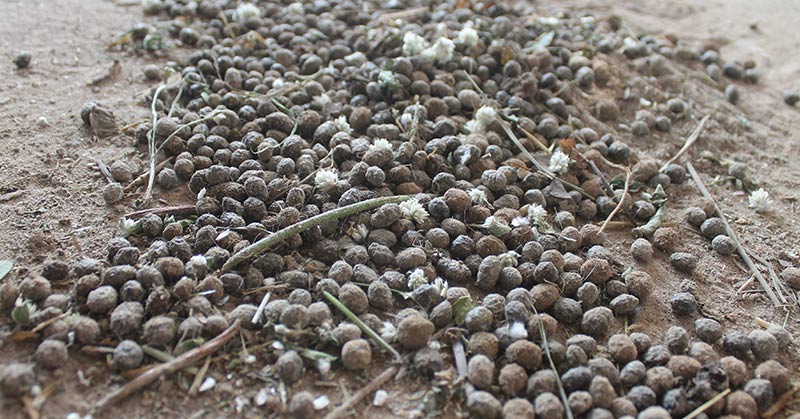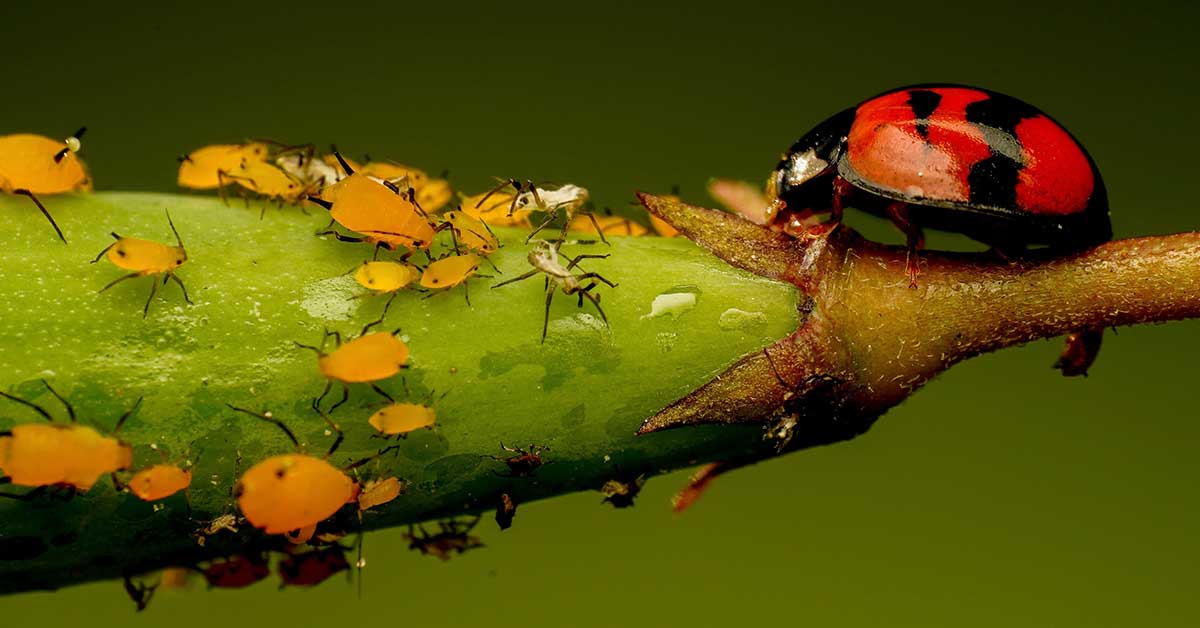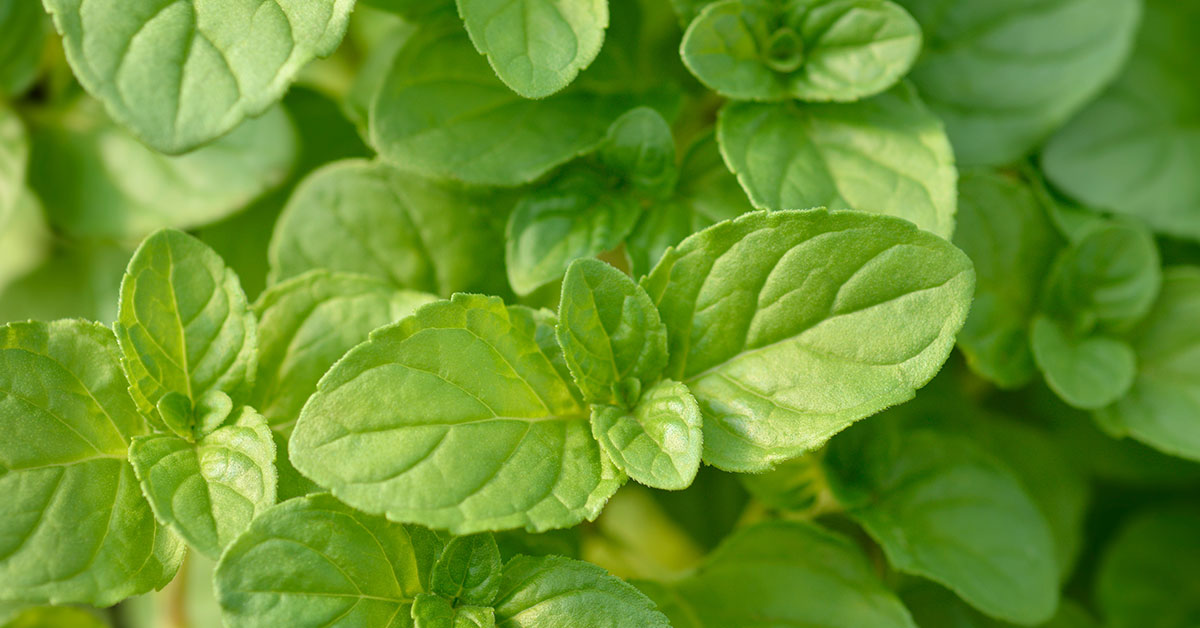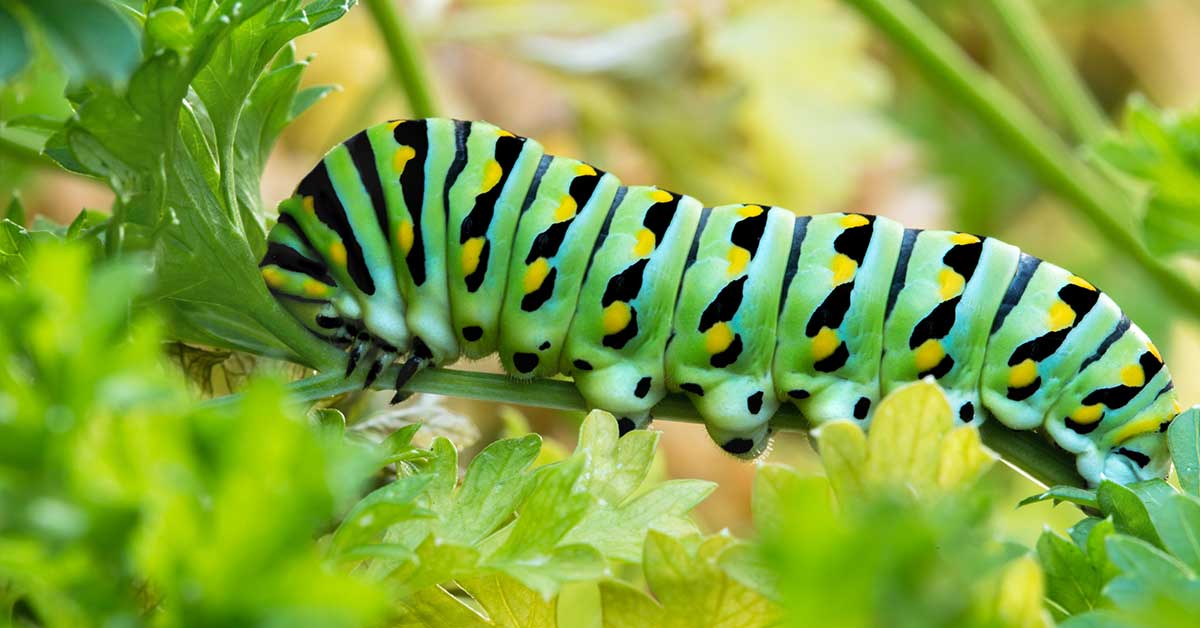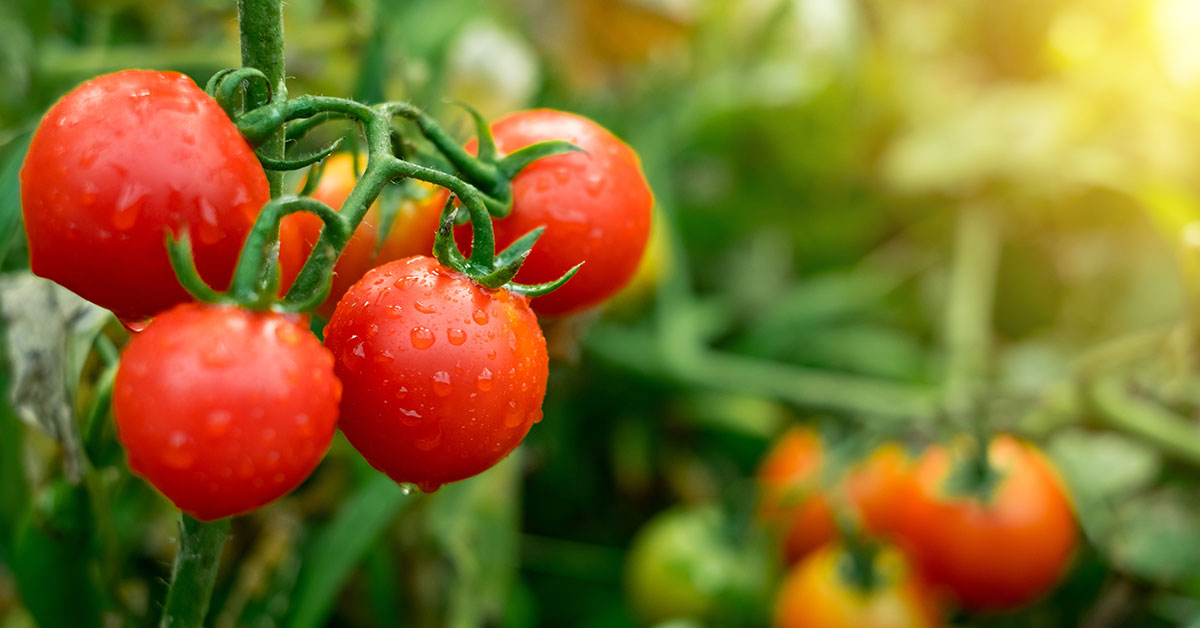I grow tomatoes every year. They’re delicious plucked straight off the vine. But 3 years ago, I tried a new kind of fertilizer and frankly, I’ve never looked back. That fertilizer? Rabbit manure. I have never had a more bodacious crop of tomatoes in my life than the years that I used rabbit manure as a fertilizer. It was so awesome that I wound up getting myself a pet rabbit not just for the bunny cuddles but that sweet, amazing manure too.
Since this revelation, I’ve come to realize just how easily permacultural systems can be deployed even in small gardens. Grow a carrot, feed it to your pet rabbit, return the rabbit’s manure to the soil, and grow a new carrot in it. In my view, rabbits are a key part of a healthy backyard farm. Let’s talk about what’s in rabbit droppings and how to use it in your garden.
What’s in rabbit manure?
Rabbit manure, like other types of animal waste, is a mixture of organic materials that include feces, urine, bedding materials, and any uneaten food. It’s rich in nutrients that can benefit plants and soil. Here’s what you can typically find in rabbit manure:
- Nutrients: Nitrogen (N): Rabbit manure is relatively high in nitrogen, which is an essential nutrient for plant growth. Nitrogen promotes lush, green foliage and helps with overall plant development.
- Phosphorus (P): Phosphorus is another crucial nutrient for plants, aiding in root development, flower production, and overall energy transfer within the plant.
- Potassium (K): Also known as potash, potassium supports various physiological processes in plants, including water uptake, nutrient transportation, and disease resistance.
- Other Nutrients: Rabbit manure also contains smaller amounts of micronutrients such as calcium, magnesium, sulfur, and trace minerals, which are necessary for healthy plant growth.
- Organic Matter: Rabbit manure contributes organic matter to the soil. This improves soil structure, water retention, and aeration, creating a healthier environment for plant roots.
- Beneficial Microorganisms: Rabbit manure can contain beneficial microbes that aid in breaking down organic matter and making nutrients more available to plants. These microorganisms contribute to the overall health of the soil ecosystem.
- Bedding Material: Depending on the source, rabbit manure might contain bedding materials such as straw, hay, or wood shavings. These materials can also contribute organic matter to the composting process.
- Urea and Urine Content: Rabbit urine contains urea, a nitrogen-rich compound. While rabbit droppings themselves already contain nitrogen, the urea in urine further contributes to the nitrogen content of the manure.
- pH Levels: Rabbit manure typically has a pH that’s slightly alkaline. This can affect the pH of the soil it’s applied to, so it’s important to consider your soil’s pH requirements.
It’s worth noting that the nutrient content of rabbit manure can vary based on factors such as the rabbit’s diet, living conditions, and the presence of bedding materials. Composting rabbit manure can further break down organic matter, reduce odors, and create a more balanced nutrient composition in the resulting compost.
When using rabbit manure as a fertilizer, it’s important to do so responsibly. Applying it to the garden soil can enrich the nutrient content and contribute to healthier plant growth. However, proper application rates and practices are essential to avoid over-fertilization and nutrient imbalances.
How to use rabbit manure in the garden
Rabbit manure is a valuable and nutrient-rich fertilizer that can greatly benefit your garden. It’s considered a cold manure, which means it can be used directly on plants without the risk of burning them, unlike some other types of manure. Here’s how to use rabbit manure effectively in your garden:
- Composting (Optional): While rabbit manure is considered safe to use directly on plants, composting it can help break down any bedding materials or other organic matter that might be mixed in. This can result in a more consistent and well-balanced fertilizer.
- Fresh vs. Aged Manure: Fresh rabbit manure can be applied around plants, but it’s generally better to let it age for a few weeks before using it to reduce any potential risk of pathogens. Aged manure is also less likely to have a strong odor.
- Direct Application: Rabbit manure can be spread directly on the soil around plants. You can either sprinkle it on the surface or gently work it into the soil using a rake or garden fork.
- Top Dressing: Apply rabbit manure as a top dressing around the base of plants, avoiding direct contact with stems to prevent burning. This provides a slow-release source of nutrients as the manure breaks down.
- Mulching: Use rabbit manure as a component of mulch. Apply a layer of manure along with other organic materials like straw or leaves to help improve soil structure, retain moisture, and add nutrients.
- Mixing with Soil: When preparing planting holes for new plants, you can mix rabbit manure with the soil in the hole. This helps provide immediate nutrients to the plant’s root zone.
- Vegetable Gardens and Flower Beds: Rabbit manure is suitable for a wide range of plants, including vegetables, fruits, herbs, and flowers. It provides essential nutrients like nitrogen, phosphorus, and potassium.
- Container Plants: For container plants, you can add rabbit manure to potting mixes to enhance their nutrient content. Use it in moderation, as containers have limited space for root growth.
- Companion Planting: Consider using rabbit manure around companion plants that benefit from higher nitrogen levels, such as leafy greens.
- Watering: After applying rabbit manure, water the area thoroughly to help nutrients seep into the soil and prevent any potential odor.
Remember that rabbit manure is relatively high in nitrogen, so it’s a good choice for promoting healthy leafy growth. However, it might be lower in phosphorus and potassium compared to other manures, so using it in combination with other organic fertilizers can provide a well-rounded nutrient supply for your plants. Always monitor your plants for any signs of over-fertilization and adjust your application rates accordingly.
How to store rabbit manure
Storing rabbit manure properly is important to preserve its nutrient content and prevent odor issues. Here’s how you can store rabbit manure effectively:
- Composting (Preferred Method): Composting rabbit manure with bedding and other organic materials is an excellent way to break down the manure, reduce odors, and create a valuable soil amendment. This process also helps to kill any potential pathogens. Create a compost pile or bin by layering rabbit manure with materials like straw, leaves, grass clippings, and kitchen scraps. Turn the pile regularly to promote decomposition.
- Aging for Use: If you intend to use rabbit manure directly in your garden, allow it to age for a few weeks to several months before application. This reduces the risk of burning plants and helps minimize odors.
- Proper Storage: If you’re storing rabbit manure for later use, consider using a dedicated storage area or container to keep it contained and prevent it from mixing with other materials. Use a well-ventilated container or bag, such as a burlap sack or breathable plastic bag, to store the manure. This allows air circulation and helps prevent excessive moisture buildup.
- Keep It Dry: Moisture can lead to odors and the breakdown of nutrients. Ensure that the stored manure remains dry. If the manure becomes wet, consider allowing it to dry before storage.
- Regular Monitoring: Check the stored manure periodically to ensure it’s not becoming overly wet or compacted. If you notice any signs of odor or decomposition, it might be best to compost the manure.
- Avoid Contamination: Store rabbit manure separately from any other types of waste or materials to avoid contamination. This is especially important if you plan to use the manure in your garden.
- Ventilation and Airflow: If you’re storing manure indoors, ensure proper ventilation to prevent the buildup of odors and gases. A well-ventilated storage area will help maintain the quality of the manure.
- Use a Lid: If using a container, consider using a lid to cover the manure and keep out rain, pests, and excessive moisture.
- Labeling: If you have different batches or sources of rabbit manure, consider labeling the storage containers with dates and any relevant information to help you keep track of the manure’s age and origin.
Remember that rabbit manure is most valuable when used as a nutrient-rich soil amendment. Composting or aging the manure before use can help ensure that you’re getting the best benefits for your garden while minimizing any potential drawbacks like odors or nutrient imbalances.
Making rabbit poop tea
To create rabbit poop tea, a nutrient-rich liquid fertilizer, you’ll need rabbit manure (either fresh or composted), a large container, water, an aeration device like an aquarium air pump and air stone, a strainer or cloth, and a watering can or spray bottle.
Begin by collecting rabbit manure from healthy rabbits. If using fresh manure, consider allowing it to age for a few weeks to reduce the risk of pathogens. Fill a large container with water, preferably non-chlorinated, to create the base of the tea. Next, add the rabbit manure to the container. A common ratio is about 1 part rabbit manure to 5-10 parts water. This mixture will serve as the brewing solution.
To ensure the tea’s effectiveness, introduce oxygen into the mixture. This is achieved using an aquarium air pump and an air stone. Allowing the mixture to steep for 24-48 hours promotes the growth of beneficial microorganisms, which break down the manure and release its nutrients into the water.
After the brewing period, strain the mixture using a fine mesh strainer or cloth. This step is crucial to remove any solid particles or chunks of manure, leaving you with a liquid fertilizer known as rabbit poop tea.
Before applying the tea to your plants, it’s important to dilute it. A common dilution ratio is around 1 part rabbit poop tea to 10 parts water. This diluted mixture can be used to water the plants at their base or sprayed onto the leaves as a foliar spray.
Keep in mind that rabbit poop tea should be used within a few days of brewing to maintain its effectiveness and prevent unpleasant odors. If the tea emits a foul or rotten smell, it may have gone anaerobic and could potentially harm your plants.
Remember to practice proper hygiene and wear gloves when handling rabbit manure. Additionally, starting with a weaker tea and monitoring your plants’ response will help you adjust the concentration according to their needs. If you have concerns about pathogens, opting for composted manure or applying the tea to the soil rather than the foliage could be more suitable.
How to compost rabbit poop
Composting rabbit manure is a sustainable and effective way to transform this waste product into a valuable soil amendment for your garden. Here’s a step-by-step guide on how to compost rabbit manure:
Start by collecting rabbit manure from clean and healthy rabbits. If possible, include bedding materials and other organic matter from the rabbit’s living area. This mixture provides a good balance of nitrogen-rich waste and carbon-rich bedding.
Gather carbon-rich materials, often referred to as “browns.” These materials include straw, dried leaves, and other dry plant matter. Carbon-rich materials provide structure to the compost pile and help maintain the proper carbon-to-nitrogen ratio.
You’ll also need nitrogen-rich materials, known as “greens.” These include kitchen scraps, fresh plant matter, and grass clippings. Nitrogen-rich materials introduce the necessary microbes that break down the compost pile.
Select a suitable location for your composting site. It should have good drainage and receive sufficient sunlight for effective decomposition. This could be a designated compost bin, pile, or even a composting tumbler.
Start building your compost pile by creating a base layer using carbon-rich materials like straw or dried leaves. This initial layer facilitates aeration and drainage in the pile.
Layer the rabbit manure over the carbon-rich base. Aim for a roughly equal mix of manure and carbon materials. This balance is crucial for efficient composting.
Continue adding layers, alternating between rabbit manure and nitrogen-rich materials. This alternating pattern ensures that the carbon-to-nitrogen ratio remains optimal for microbial activity.
As you build the pile, remember to turn it regularly using a pitchfork or compost aerator. Turning the pile promotes aeration, which is essential for decomposition. Additionally, ensure the pile stays moist but not overly wet. Water it as needed to maintain the right moisture level.
Monitoring the temperature of the compost pile can provide insights into its progress. Active microbial activity will cause the pile to heat up. A temperature of around 130-150°F (54-65°C) is an indicator of effective composting.
Allow the compost pile to decompose over several months. Turning the pile every few weeks ensures even decomposition and helps prevent issues like compacting or unpleasant odors.
Over time, the compost pile will transform into dark, crumbly compost with a pleasant earthy smell. Rabbit manure contributes valuable nutrients to the finished compost, making it a valuable addition to your garden.
Once the compost is fully matured, you can incorporate it into your garden soil. This enriched compost improves soil structure, water retention, and nutrient content, providing a fertile environment for your plants to thrive.
Composting rabbit manure not only reduces waste but also contributes to a healthier garden ecosystem by recycling nutrients and enhancing soil quality.
Read More: How Long Does It Take To Make Compost?
Are rabbit droppings safe for humans?
Yes, rabbit droppings, also known as rabbit manure, are generally safe for humans. Unlike the manure of some other animals, rabbit droppings do not typically contain harmful pathogens that can pose a significant risk to human health. However, there are some important considerations to keep in mind:
- Handling Hygiene: While rabbit droppings are considered safe, it’s still recommended to practice proper hygiene when handling any type of animal waste, including wearing gloves and washing your hands thoroughly afterward.
- Composting: Rabbit manure is an excellent addition to compost piles. When properly composted, the heat generated during the composting process helps kill potential pathogens. However, it’s advisable to avoid using fresh rabbit droppings directly on edible crops that will be consumed without further processing.
- Aging and Composting: Allowing rabbit droppings to age for a few weeks before using them as fertilizer can reduce the risk of any potential pathogens. Composting rabbit manure with other organic materials further reduces any concerns.
- Vegetable Gardens: If you plan to use rabbit manure in your vegetable garden, consider applying it to the soil several months before planting to allow time for any potential pathogens to break down. This is a general precaution to minimize any risks.
- Wash Produce: If rabbit manure has been used in the garden, it’s a good practice to wash any homegrown produce thoroughly before consumption, as you would with any produce from an outdoor garden.
- Composted Pet Bedding: If you’re using rabbit manure from pet rabbits that have lived in a clean and sanitary environment, the manure is even less likely to pose any health risks.
Overall, when handled with care and used properly, rabbit droppings are a valuable source of nutrients for gardens and can be a safe addition to compost piles. Just remember to prioritize hygiene and good gardening practices to ensure a safe and healthy environment.
Where to buy rabbit manure
You can find rabbit manure for sale from various sources, both online and offline. Here are some options to consider:
- Local Rabbit Farms: Local rabbit farms or breeders might offer rabbit manure for sale. They could have excess manure from their rabbits and may be willing to sell it to gardeners and farmers.
- Garden Centers and Nurseries: Some garden centers and nurseries may carry bags of composted rabbit manure as part of their organic gardening products. Check with your local stores to see if they offer it.
- Online Marketplaces: Online marketplaces like Amazon, eBay, and specialty gardening websites often offer rabbit manure for sale. You can browse various options and read reviews to find a reputable seller.
- Local Classifieds: Websites, social media groups, and classified ads in your area might have listings from individuals selling rabbit manure. Make sure to verify the quality and source before purchasing.
- Farmers’ Markets: Farmers’ markets can be a good place to connect with local farmers who might have rabbit manure available. They may sell it as part of their organic produce offerings.
- Agricultural Co-ops: Agricultural cooperatives or supply stores might have rabbit manure for sale, especially if they cater to organic and sustainable farming practices.
- Manure Suppliers: Some suppliers specialize in various types of animal manure, including rabbit manure. They may provide bulk quantities for larger gardening or farming projects.
- Petting Zoos or Animal Exhibitions: Petting zoos or animal exhibitions might have rabbit manure available for purchase as they clean their animal enclosures regularly.
When purchasing rabbit manure, it’s important to consider a few factors:
- Quality: Ensure that the rabbit manure is clean, well-composted, and free from contaminants.
- Source: If possible, learn about the source of the rabbit manure. Manure from well-maintained, healthy rabbits is preferable.
- Composting: If the manure is fresh, inquire about whether it has been composted. Composting reduces the risk of pathogens and improves nutrient availability.
- Local Regulations: Be aware of any regulations or restrictions related to purchasing, selling, or using animal manure in your area.
Remember that rabbit manure is a valuable and nutrient-rich addition to your garden, but using it responsibly and following recommended application practices is important for successful and safe gardening.
Should I keep rabbits?
Keeping rabbits as pets or for other purposes requires careful planning and consideration to ensure their well-being and your ability to provide proper care. Here are some important factors to consider when keeping rabbits:
- Housing: Rabbits need appropriate housing that provides enough space for exercise and movement. A hutch or cage should be spacious, well-ventilated, and protected from harsh weather conditions.
- Indoor or Outdoor: Decide whether your rabbits will be kept indoors, outdoors, or a combination of both. Outdoor rabbits need protection from extreme temperatures, predators, and other hazards.
- Companionship: Rabbits are social animals and often do best when kept in pairs or small groups. Consider getting more than one rabbit to provide companionship, but ensure they are properly bonded.
- Diet: Rabbits require a diet primarily consisting of hay, fresh vegetables, and a small amount of rabbit pellets. Providing a balanced and nutritious diet is essential for their health.
- Veterinary Care: Regular veterinary check-ups are crucial to monitor your rabbits’ health and address any medical concerns promptly. Find a veterinarian experienced in treating rabbits.
- Exercise: Rabbits need daily exercise to prevent obesity and maintain good muscle tone. Consider creating a safe, enclosed space where they can hop around and explore.
- Enrichment: Provide toys, tunnels, and items for chewing to keep rabbits mentally and physically engaged. Rabbits are curious animals that need mental stimulation.
- Grooming: Depending on the breed, rabbits may require regular grooming to prevent matting and keep their fur clean and healthy.
- Litter Training: Rabbits can be litter trained, which makes cleaning their living area easier. Provide a litter box filled with appropriate bedding material.
- Safe Environment: Ensure the environment is free from potential hazards such as toxic plants, electrical cords, sharp objects, and other dangers.
- Health Monitoring: Keep an eye out for signs of illness, including changes in behavior, appetite, or waste output. Promptly address any health concerns.
- Socialization: Spend time interacting with your rabbits to build trust and strengthen the bond. Gentle handling helps rabbits become accustomed to human touch.
- Time Commitment: Rabbits require daily care, including feeding, cleaning, exercise, and companionship. Be prepared for the time commitment involved in their care.
- Longevity: Rabbits can live for 7-12, depending on the breed and their care. Be ready for a long-term commitment before bringing rabbits into your home.
- Legal Regulations: Check local regulations and zoning laws regarding rabbit ownership. Some areas have restrictions on pet rabbits or require specific permits.
Owning rabbits can be a rewarding experience, but it’s important to educate yourself about their needs, behaviors, and proper care requirements. Responsible rabbit ownership ensures the health and happiness of your furry companions.
